Eyelid Surgery
The skin loses its elasticity and our muscles slacken with age. For the eyelids this results in an accumulation of loose skin which collects as folds in the upper lids and forms deepening creases in the lower lids. At the same time there is slackening of the muscle beneath the skin allowing the fat, which cushions the eyes in their sockets, to protrude forward to give the appearance of bagginess. In some families there is an inherited tendency for bags to develop during early adulthood before any skin changes.
The problem often seems worse in the morning particularly with prolonged stress and lack of sleep. Fluid that is normally distributed throughout the upright body during the day, tends at night to settle in areas where the skin is loose, such as the eyelids. Drooping of the eyelids is also an effect of the ageing process and aggravates the accumulation of the skin in the upper eyelids. Sometimes so much skin accumulates in the upper lids that it hangs over the eyelashes to obstruct vision.
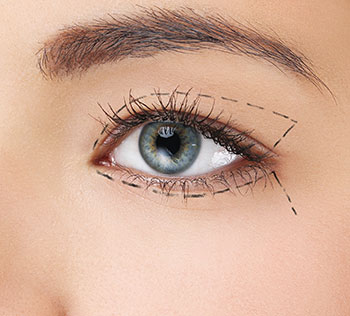
What can be done?
An eyelid reduction (blepharoplasty) removes the surplus skin and protruding fat to produce a more alert appearance and reduces the morning swelling. Sometimes it is only necessary to reduce the skin, sometimes the skin and the fat and sometimes just the fat. If only the fat is being removed from the lower eyelids, then this can be removed from the inside of the lower eyelid avoiding an external excision (transconjunctival blepharoplasty)
What are the consequences?
People who have the familial problem of bags beneath the eyes may well undergo surgery in their 20s. Ageing effects of the skin are apparent earlier in the eyelids than elsewhere. A reduction of the skin can be carried out from the age of 35. Patients with thyroid disease often develop eye signs which can be helped by surgery. Where there is reduced secretion of thyroxin (hypo-thyroidism) there is an increase in fat and where there is an increase in thyroxine (hyper-thyroidism) there is often so much increase in fat that the eyes protrude. An extended eyelid reduction (Olivari?s procedure) can treat this satisfactorily.
What are the limitations?
It is important for you to understand that only the wrinkles which are in the skin which is cut away will be removed. We are only treating the eyelids within the bony margin of the orbit (eye sockets). Folds of skin extending on to the cheek (festoons) will not normally be improved. Wrinkles in the area of the crows feet will remain and although the skin is much tighter it is still necessary to be able to open and close the eyes freely. The skin has less elasticity with age and for proper closure of the eye the upper eyelid will need to have surplus skin when it is open. Descent of the eyebrow can be helped by endoscopic brow lift and an extension of this, the deep facelift, can be used to not only lift the eyebrow and the upper eyelid, but also lift and open the outer angle of the eye.
Sometimes residual or recurrent wrinkles are suitable for treatment by chemical peeling or laser resurfacing. The operation has no effect at all on the dark colour of the lower eyelid.

The Operation
Both upper and lower eyelid surgery can be carried out under local anaesthesia or under general anaesthesia in a hospital.
In a typical procedure we make incisions following the natural lines of your eyelids; in the creases of upper lids and just below the lashes in the lower lids. These incisions are extended a little way into the crows feet or laughter lines at the corner of the eyes. Through this incision surplus fat is removed and excess skin and sagging muscle removed.
If you have a pocket of fat beneath your lower eyelids without surplus skin then the fat may be removed through the inside of the lower eyelid.
The resurfacing laser can be used at the same time as a transconjunctival blepharoplasty to tighten the external skin and reduce wrinkles, although there is no external scar there is residual redness in the skin which will last a few months.
Following surgery it would be best to keep your head elevated for a few days to reduce swelling. Cold compresses can also help. We will normally apply some suture strips or steri-strips as support to the eyelids after surgery and if these become crusted they can be replaced. Cleaning the eyes with water is useful and we advise the use of eye drops or ointment.
The sutures are usually removed after 3 to 5 days and soon after you will be able to use make-up. Sometimes you will be advised to use the suture strips or steri-strips as support to the lower eyelids for a week or so.
The closure of the eyes appears tight after surgery because of the swelling and because skin has been removed. If closure is not complete at night the patient should apply some eye ointment before going to sleep. This sensation will settle as the swelling goes down.
The eyes appear watery after surgery, partly because of swelling under the conjunctiva (chemosis) and partly because the tear ducts are swollen and do not drain as readily. This will last a few weeks. Although there is bruising it can quite readily be disguised with make-up and dark glasses. The scars will be pink for a few months, but eventually they become almost invisible.
What are the risks?
You can reduce the risks by closely following our instructions both before and after surgery. You should tell us of any thyroid disease, high blood pressure, diabetes or eye disorder such as detached retina or glaucoma. It may be that we will wish you to be checked by an Ophthalmologist.
Occasionally a pool of blood can collect under the skin after the operation has finished (haematoma) this usually disperses spontaneously over 2 or 3 weeks but it may need to be drained if it is large. Quite commonly the margin of the lower lid is slightly pulled away from the eye during the first day or two after surgery due to swelling. This will settle on its own or with the help of suture strips or steri-strips. Very occasionally another operation is necessary.
Sometimes tiny white cysts can appear along the stitch line. They are nothing to be concerned about but can be pricked out with a needle. Blindness is an exceptionally rare complication.
Before and After
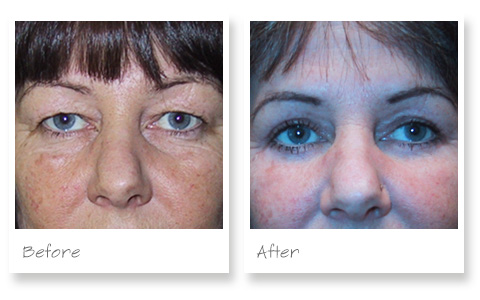
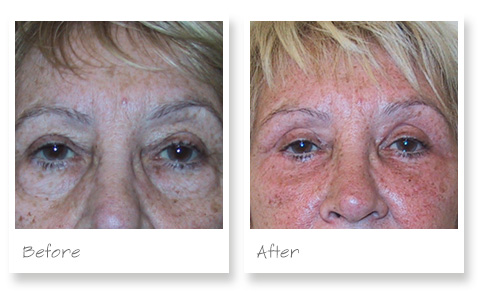
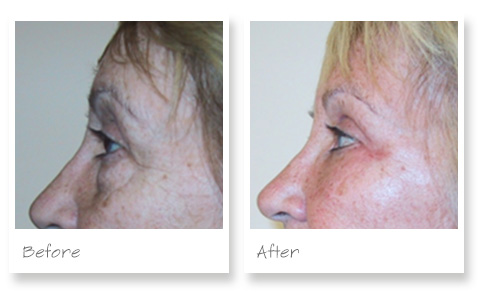
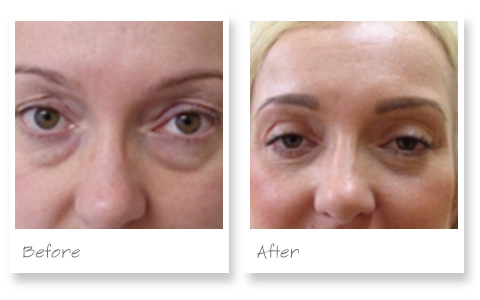
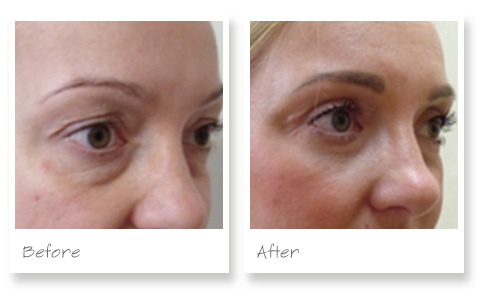
Testimonials...
When I first considered cosmetic surgery it was important to me that I chose the correct provider. I looked at a number of surgeons in the North West and was very impressed with Mr Iqbal’s profile on his website. I was fortunate enough to have a friend who was able to speak to one of Mr Iqbal’s previous patients who was extremely pleased with their results which put my mind at rest to book that first important appointment.
The work I was looking to have done was to my upper and lower eye lids and I was immediately put at rest when meeting Mr Iqbal, I could only describe him as very nice and lovely man who clearly had a great a great knowledge with extensive experience in his field.
After discussing the procedure, with time taken to explain both pore and post operation, I was ready to go ahead. The results were fabulous and I was extremely pleased with the results. The team at Spire Liverpool Hospital were fabulous and I could not fault them at all.
If I was to consider further surgery I would definitely see Mr Iqbal and attend Spire again and wouldn’t hesitate to recommend them.
-NM
Mrs Williams had been thinking about surgery on her eyelids for a period of time but was always slightly reticent and nervous about what lay ahead for her.
The procedure entitled blepharoplasty meaning the surgical repair or reconstruction of the eyelid is a procedure that Mr Iqbal completes regularly for his patients and is one that on many occasions provides a new lease of life and confidence to the patient.
From the first consultation through the procedure to after-care the care and consideration was first class. The apprehension shown by Mrs Williams had soon gone after meeting with Mr Iqbal at Spire Hospital, she was made to feel comfortable and was surprisingly relaxed following the initial discussions. Mrs Williams explains,
“Mr Iqbal was by my bedside as I came round from the anaesthetic to reassure me that everything had gone really well and I was extremely pleased with the outcome. It has given me so much more confidence and has taken years off my life.”
A year has gone by since the procedure and Mrs Williams added,
“I would like to say a big thank you to Mr Iqbal and the team at Spire,the surgery was worth every penny and I would highly recommend having the procedure to anyone who is considering taking the plunge.”
- Mrs Janet Williams
Downloads